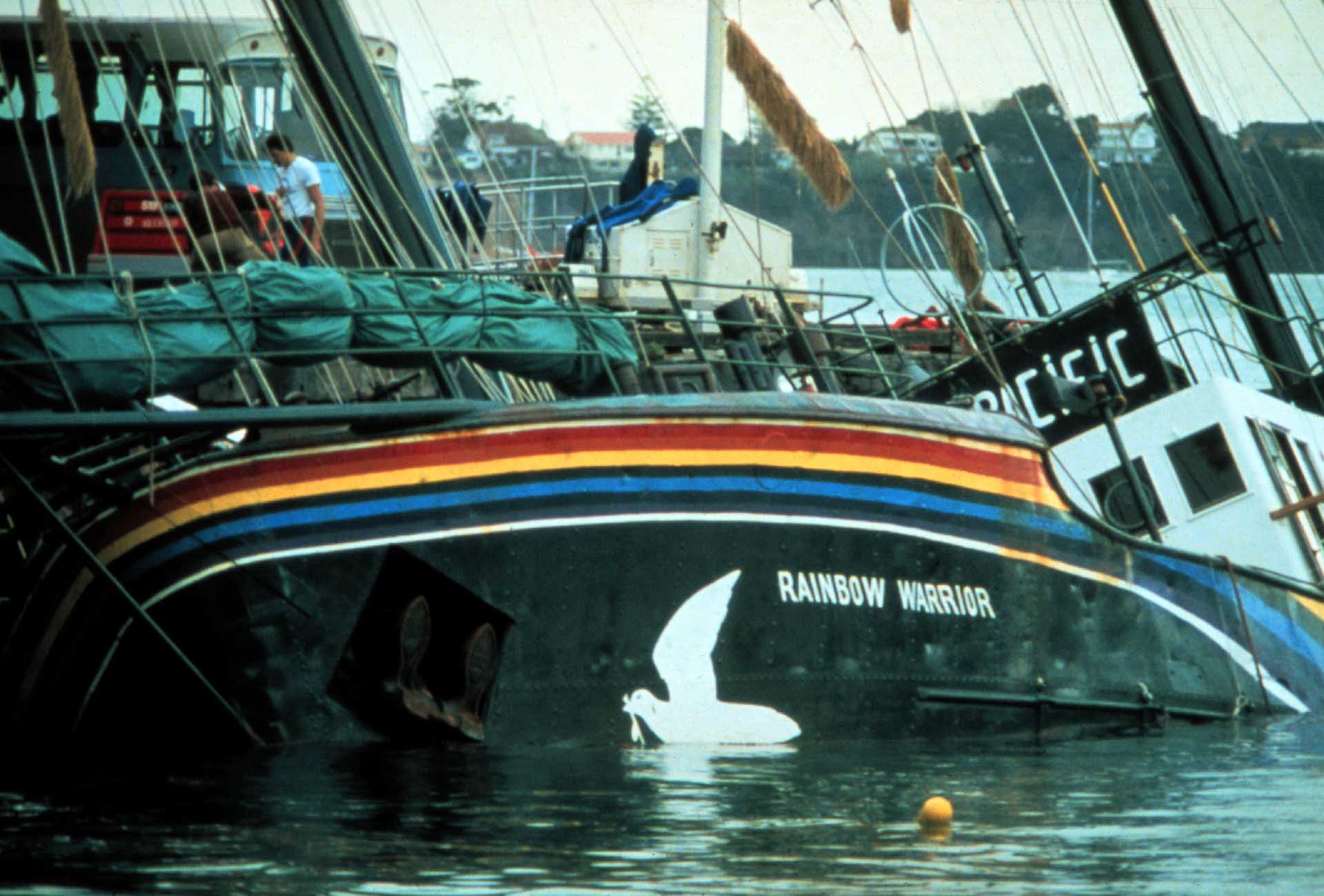Sinking of the Rainbow Warrior (1985)
Wed Jul 10, 1985

Image: The Rainbow Warrior in Marsden Wharf in Auckland Harbour after the bombing by French secret service agents. © Greenpeace / John Miller [greenpeace.org]
On this day in 1985, the French government, in an act of state-sponsored terror, bombed the Greenpeace-operated boat Rainbow Warrior, which was en route to protest a nuclear weapons test planned by the French state. The bombing, later found to be personally ordered by French President François Mitterrand, killed a freelance photographer on board named Fernando Pereira.
France had been testing nuclear weapons on the Mururoa Atoll in French Polynesia since 1966. In 1985 eight South Pacific countries, including New Zealand and Australia, signed a treaty declaring the region a nuclear-free zone.
Since being acquired by Greenpeace in 1977, Rainbow Warrior was active in supporting a number of anti-nuclear testing campaigns during the late 1970s and early 1980s, including relocating 300 Marshall Islanders from Rongelap Atoll, which had been polluted by radioactive fallout by past American nuclear tests.
For the 1985 tests, Greenpeace intended to monitor the impact of nuclear tests and place protesters on the island to observe the blasts. Three undercover French agents were on board, however, and they attached two limpet mines to Rainbow Warrior and detonated them ten minutes apart, sinking the ship.
France initially denied responsibility, but two of the French agents were captured by New Zealand Police and charged with arson, conspiracy to commit arson, willful damage, and murder.
The resulting scandal led to the resignation of the French Defence Minister Charles Hernu, while the two agents pleaded guilty to manslaughter and were sentenced to ten years in prison. They spent a little over two years confined to the French island of Hao before being freed by the French government.
In 1987, after international pressure, France paid $8.16m to Greenpeace in damages, which helped finance another ship. It also paid compensation to the Pereira family, making reparation payments of 650,000 francs to Pereira's wife, 1.5 million francs to his two children, and 75,000 francs to each of his parents.